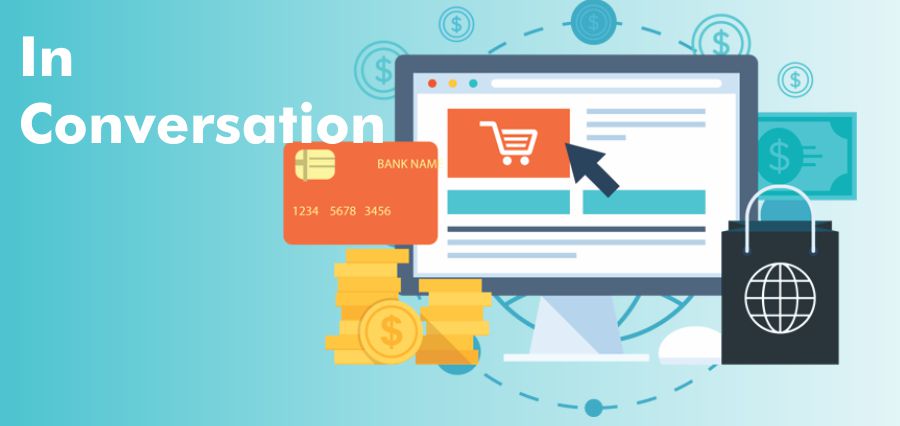Around $1 is spent online per $5 for non-food purchases. E-commerce markets have seen a rise of almost 14% from last year. In the US only, online shoppers spent 4.45bn on Thanksgiving Day and Black Friday. These transactions are secured by Payment Gateway processes. The Payment Gateway process is a service that authorizes and carries out the payment process for online retailers and e-businesses. These services are also responsible for processing the payment securely. There are numerous payment service providers, and just like other any other industry, in this industry also, Goliaths are being challenged by Davids.
Around the year 1996, Jeff Knowles, the Father of Payment Gateway, got the idea for processing online payments. Netscape introduced SSL encryption for the data which was transferred online. This has become essential for secure online shopping. 1995-1996 were pioneering years for the payment gateway process. Amazon and e-bay were also launched during these years.
The way of Gateway
The merchant site, having information about products or services purchased by customers, redirects the customers to a Payment Gateway site. These sites are provided with the amount of billing or transaction details. The site then asks the customer to fill in the data necessary to carry out the transaction. These details include: Credit/Debit card number, Bank account holder’s name, and details like date of expiry etc. If payment is being made by other channels (credits or alternative currency), relevant field are there which need details to be filled up. One-time password (OTP) is generated by the bank after details are submitted, which is sent directly to the user. This OTP is required to validate the transaction. After validating, a receipt is generated declaring completion of successful payment process. There are various systems to carry out the process in a Payment Gateway. Also, the process of online payment varies according to geographical regions, websites, and policies.
Unusually, there are methods in which the payment process is done via SSL (Secure Socket Layer) encryption. In some cases, bypassing the merchant’s systems, transaction data is sent directly from the customer’s browser to the gateway. These processes are able to move forward only when the merchant’s acquiring bank gets the transaction information by the payment processor used in it. The card issuing bank receives the authorization request and after checking the details it then sends a response back to the processor. The processor sends this authorization response received from the bank to the payment gateway. This whole process takes just 2-3 seconds. But, the entire process from authorization and validation of details to settlement to funding normally takes 3 days.
Prerequisites for online transactions
If a service provider is well established and credible, then it should be our first choice. Use Card Security Codes, such as CVV2, CVVC, and CID (varies according to the card you use). These codes provide additional assurance that the card is in possession of the buyer. Make sure to buy from reputed sites for which the uniform resource locator (URL) starts with ‘https’, and not to use the URL starting with ‘http’.
It is mandatory to use a reputed anti-malware program. This may sound obvious but it is seen that the percentage of e-commerce website customers who use updated anti-malware program is less. Also, keep your browser and operating system updated.
The passwords used for these websites need to be treated as confidential and need not to be shared. OTPs and security codes add trust for payment gateways that the transaction is being carried out by the person who is actual owner of the bank account and cards provided.
After completing the transaction, we receive an e-mail for the same. It normally contains the receipt for the transaction. These documents are important and need to be tracked. If, by any chance, system fails to send the mail, immediate action needs to be taken from the customer.
For internet banking users, it is mandatory to log out every time they exit the online banking portal. Also, avoid using actual keyboard and prefer a virtual keyboard for entering the details. There are malwares that track the keys pressed on the keyboard. For this, a virtual keyboard is preferred.
Many times a user is asked by the browser whether the data is to be remembered by the browser or not. Make sure not to select the option like Auto fill or Auto complete which stores or retains informative details entered by the user while filling a form. This feature saves time and efforts many times, but security cannot be guaranteed when user auto-fills the info.
There is a universal rule in Commerce- Buyer beware. Buying from a unknown or unusual e-commerce website may lead to various issues. Low quality goods, poor service are only one time damages. Providing data to such companies may cause unrecoverable losses. Because, all customer need is satisfaction. And the quality of awareness will lead to it.
The time ahead for payment gateways
Biometrics technology was limited for the purpose of accessing security until Apple and Samsung introduced it in smartphones. Still developing, Biometrics on smartphones is not yet able to provide the level of security required by banks. Considered as the main function, in future biometrics will be used for a variety of purposes. For payment, authorization, internet of things, and gaming, biometrics is going to be implemented and accepted widely. For transactions via mobile, mobile wallets are being developed. These wallets will manage user transactions. Finally, biometrics will not only be featured in smartphones, but also will be part of laptops, cloud and ubiquitous computing as well.
Payment Fortification: Take responsibility
Service providers are improving time to time and developing new technologies to prevent theft. Precautionary measures are being taken to protect user data at all costs. However, a user can protect his/her details by following the prerequisites mentioned above. The way we spend today has changed, so has the way we fortify the payments.
Payment Gateways: Identify the Vulnerabilities & Strengths


